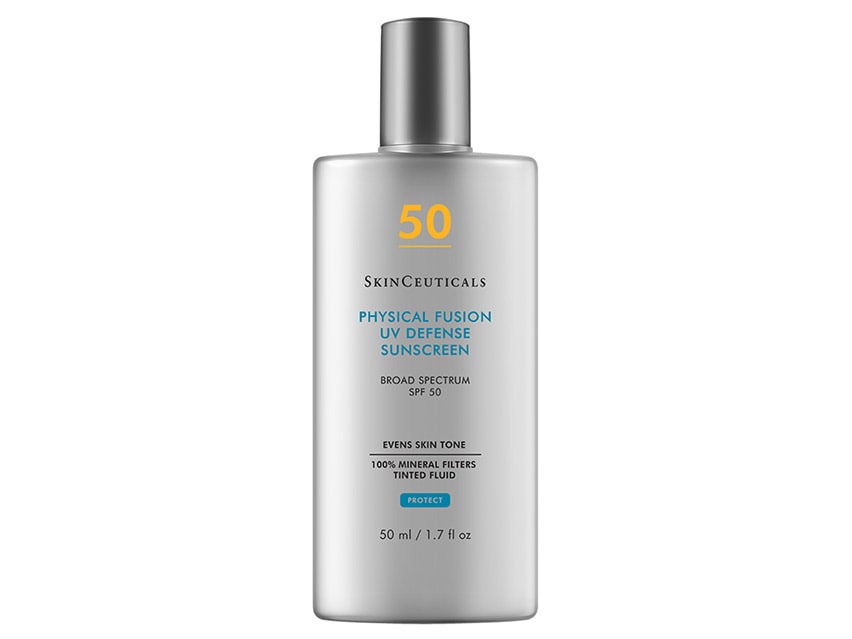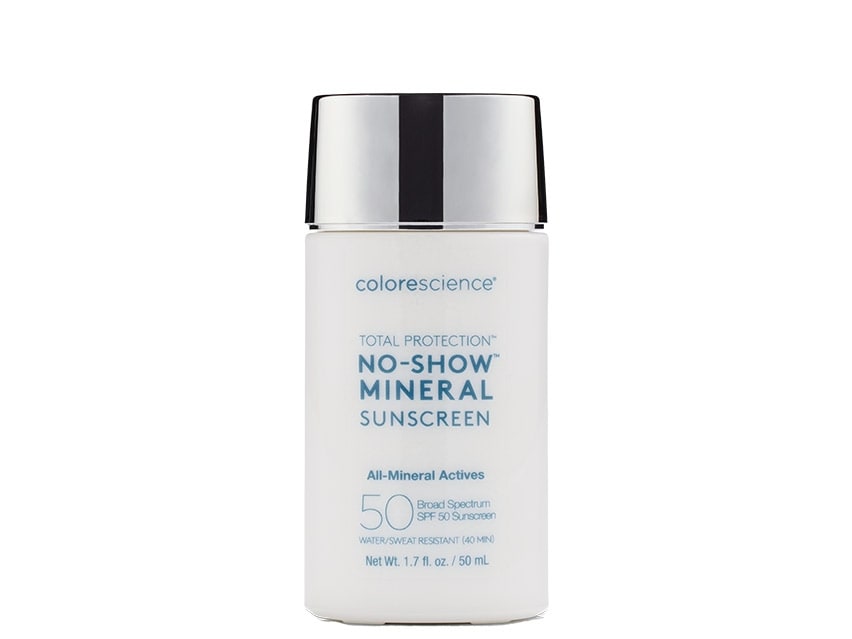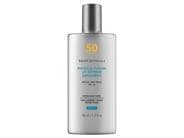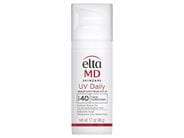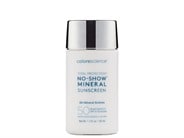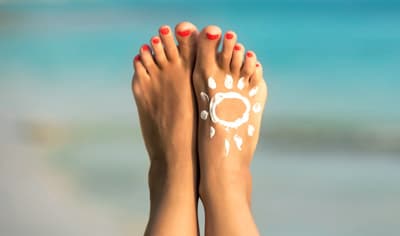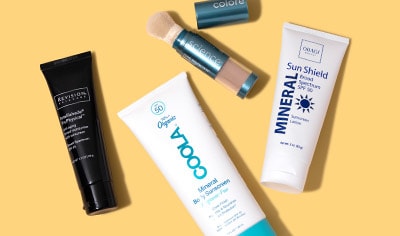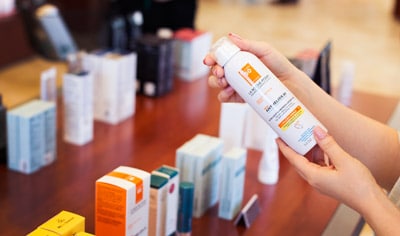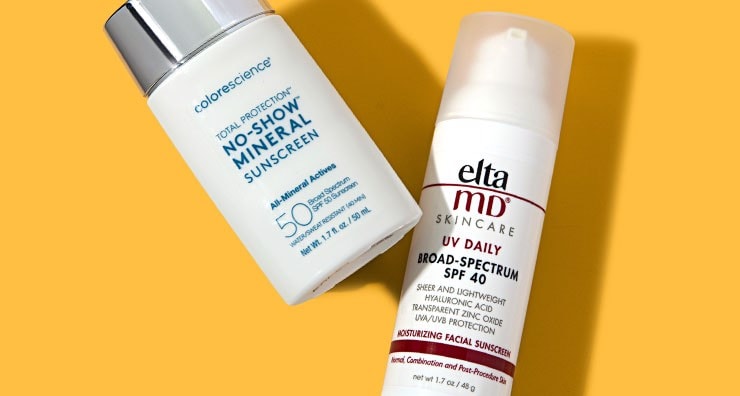
It’s no secret sunscreen is a must-have when it comes to protecting your skin from the sun’s damaging rays. As you’re packing your bag for a beach day or upcoming vacation, you might be eyeing your leftover sunscreen from last year and wondering if it’s still okay to use. Does sunscreen expire, and how long does it really last once applied? With the help of board-certified dermatologist and LovelySkin CEO Dr. Joel Schlessinger, we’re here to answer all of your questions about the effectiveness of sunscreen, including:
How long does sunscreen last?
We all know how important it is to apply sunscreen when we head out for the day, but here’s the million-dollar question: How long does sunscreen last once applied, and when should you reapply it? Well, sunscreen has the ability to protect skin for about two hours at most. Exactly how long sunscreen lasts really depends on the activity you are doing, but if you’re swimming or sweating, Dr. Schlessinger recommends applying sunscreen at least every forty minutes. When it comes to applying and reapplying your sunscreen, be generous. It typically takes one and a half ounces—or a shot glass— of sunscreen to adequately cover and protect your entire body from head to toe.
When you’re outside during the sun’s peak hours—10 a.m. to 4 p.m.—it’s a great practice to supplement your sunscreen use with physical sun protection such as a wide-brimmed hat and UPF clothing. “If you’re going to be spending time at the beach or pool this summer, plan ahead with beach umbrellas or canopies that can help you seek the shade during the midday hours when the sun’s rays are the strongest and your skin is most at risk,” Dr. Schlessinger says.
When does sunscreen expire?
Does sunscreen expire? Yes, like all skin care products, there’s a definite shelf life for your sunscreen. The majority of sunscreens now come with an expiration date, usually located on the top or bottom of the container. “If your sunscreen does not have an expiration date, you can use a permanent marker to write the date it was opened right on the bottle,” Dr. Schlessinger says. “Once opened, a sunscreen will last about one year. If you’re applying sunscreen daily, a bottle shouldn’t last long, and you should have no trouble using it before its expiration date.” Once sunscreen has passed its expiration date, it’s time to toss it. “Not only has expired sunscreen lost its effectiveness, but it can potentially be contaminated with bacteria or mold that could actually end up harming your skin,” Dr. Schlessinger says. “When a sunscreen’s active ingredients degrade over time, they could also potentially cause skin irritation as well.” If sunscreen that you’ve opened a while ago looks funny or just smells off, it’s time to open a fresh bottle.
What sunscreen should I use?
Dr. Schlessinger recommends using a broad-spectrum sunscreen with an SPF of 30 or more. Not sure what that means? Check out the LovelySkin Sun Care Blog to learn more about what SPF means. Sunscreens also protect your skin using mineral ingredients (zinc oxide and titanium dioxide) or chemical blockers (oxybenzone, octisalate, octinoxate, avobenzone, octocrylene and homosalate). Some formulas even use a combination of both. If you’re curious about the difference, give our guide on mineral vs. chemical sunscreen a read.
Finding the best sunscreen for you is a personal process that can take some trial and error, but these five recommendations are a great place to start:
TiZO 3 Age Defying Fusion Tinted Face Mineral Sunscreen SPF 40
This face primer/sunscreen hybrid provides broad-spectrum protection with mineral blockers (zinc oxide and titanium dioxide) in a lightly tinted formula that dries to a matte finish. You can wear it alone or under makeup, and it’s suitable for all skin types, including sensitive skin and even post-procedural skin.
SkinCeuticals Physical Fusion UV Defense Tinted Mineral Sunscreen
If you prefer a tinted sunscreen for your face, this easy-to-use, water-resistant facial sunscreen could be the way to go. It combines 100% mineral filters (zinc oxide and titanium dioxide) with a touch of translucent color to help enhance your skin tone while offering broad-spectrum protection from the sun. The best part about this formula is that it’s lightweight and doesn’t leave a white cast behind like some all-mineral sunscreens.
EltaMD UV Daily Broad Spectrum SPF 40 Facial Moisturizer
This facial sunscreen combines the skin-softening powers of a daily moisturizer with broad-spectrum protection from zinc oxide and octinoxate. It contains hyaluronic acid, a powerful hydrator, to help draw moisture into your skin and keep it there throughout the day. This formula is also entirely fragrance-free, making it a great choice if you prefer to avoid scents with your sunscreen.
La Roche-Posay Anthelios 60 Melt-in Sunscreen Milk SPF 60
If you’re turned off by the texture of traditional sunscreen lotions and creams, you’ll love the silky, fast-absorbing feel of this all-over face and body sunscreen. It protects your skin with a blend of five chemical blockers (octocrylene, avobenzone, homosalate, octisalate and oxybenzone) and also contains vitamin E to help prevent free radical formation from sun exposure, which can reduce the visible effects of skin aging over time.
Colorescience Total Protection No Show SPF 50
Sun protection brand Colorescience is known for its tinted sunscreens with all-mineral blockers, and it recently debuted this untinted option for those who are looking for sun protection without color. This formula contains 10% zinc oxide and goes on white before blending into a sheer, natural-looking finish. In addition to working well as a facial sunscreen, this formula works well to protect your neck, ears and backs of the hands as well.
Looking for more sunscreen options for the body? You can read up on some of our suggestions for the best body sunscreens for everyday use on the LovelySkin Blog.
Shop this blog
Follow us on social
Follow us on social networks and be one of the first to learn about sales, giveaways, and free samples


